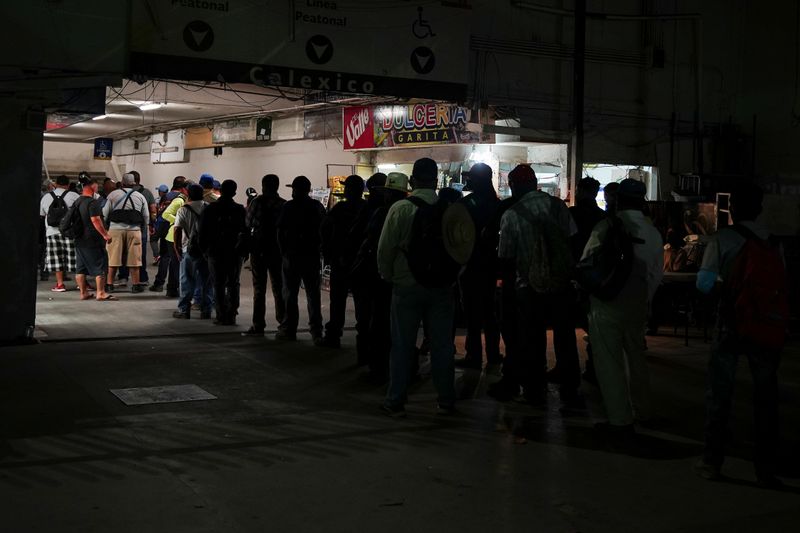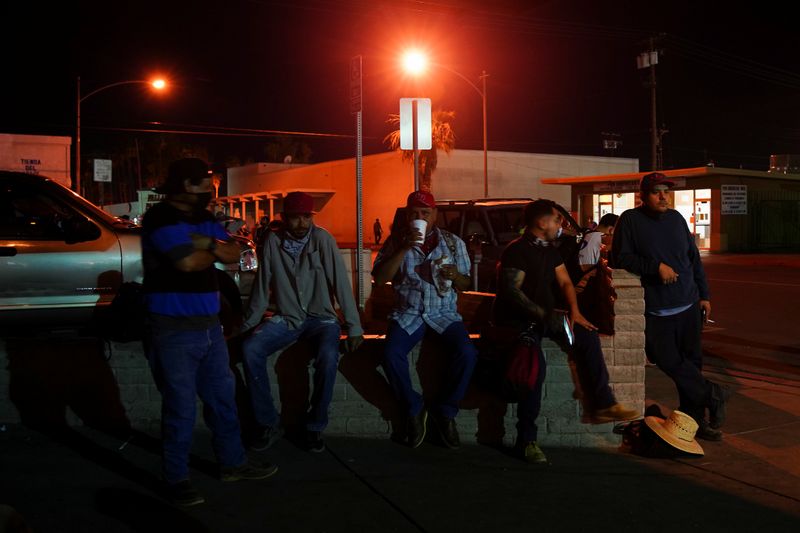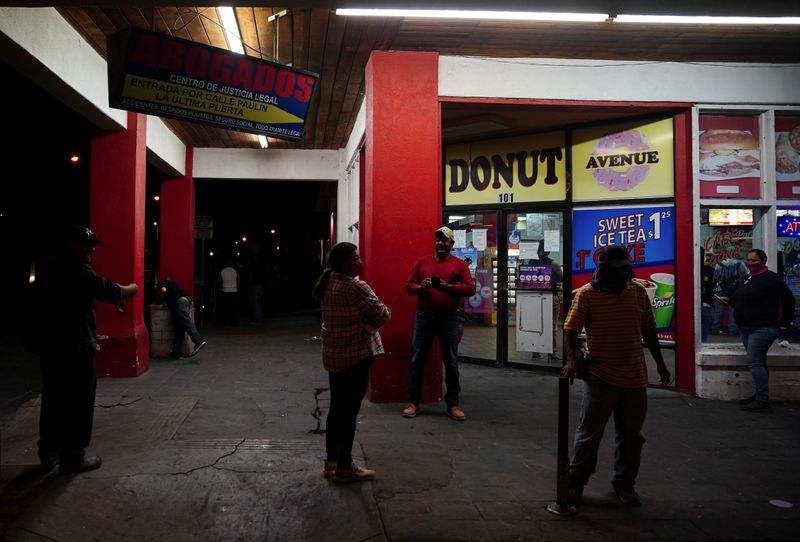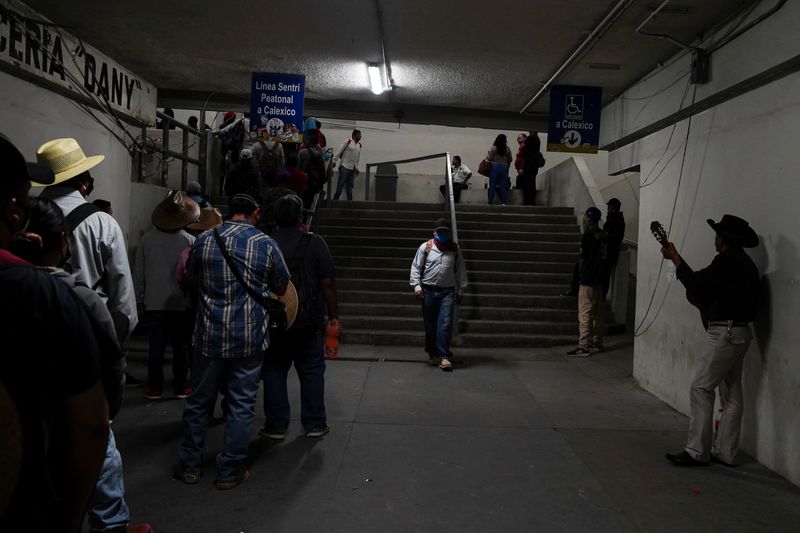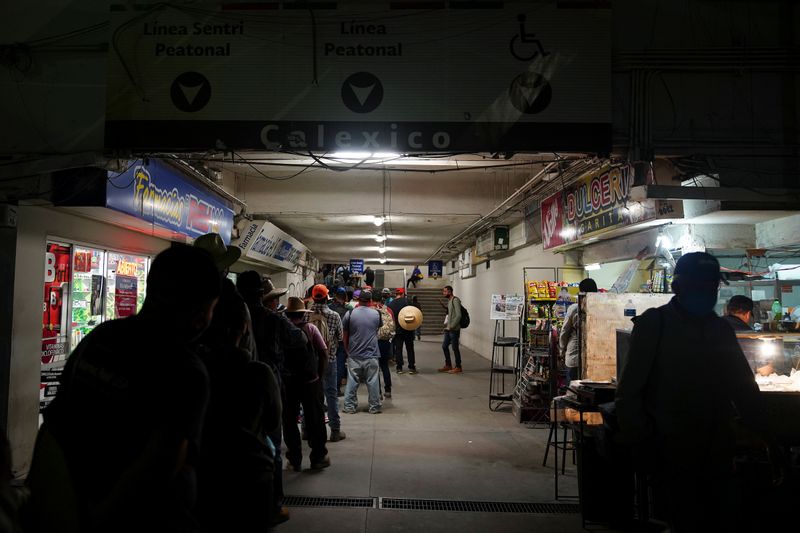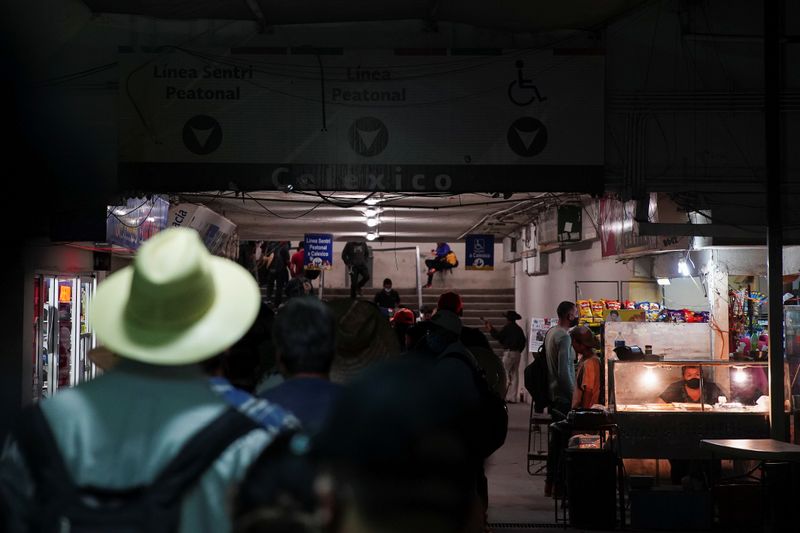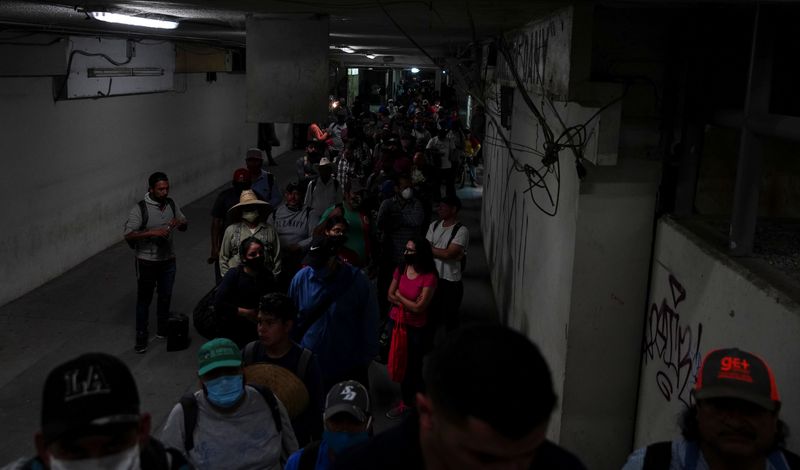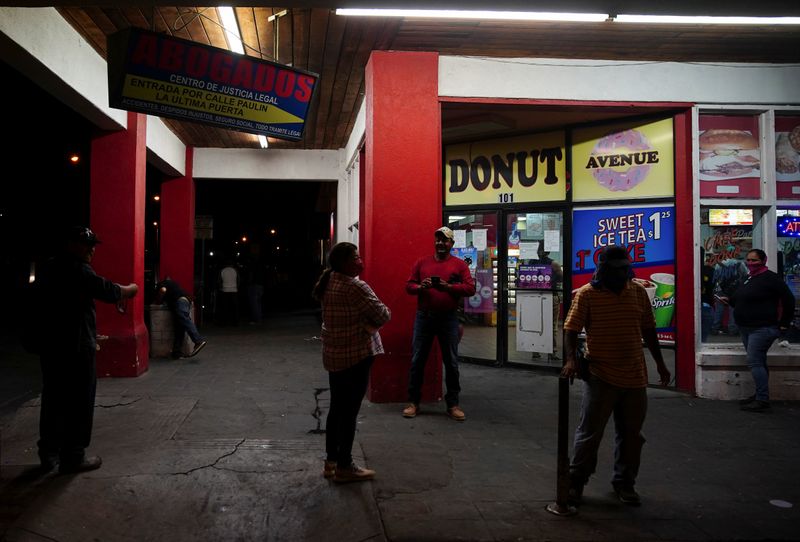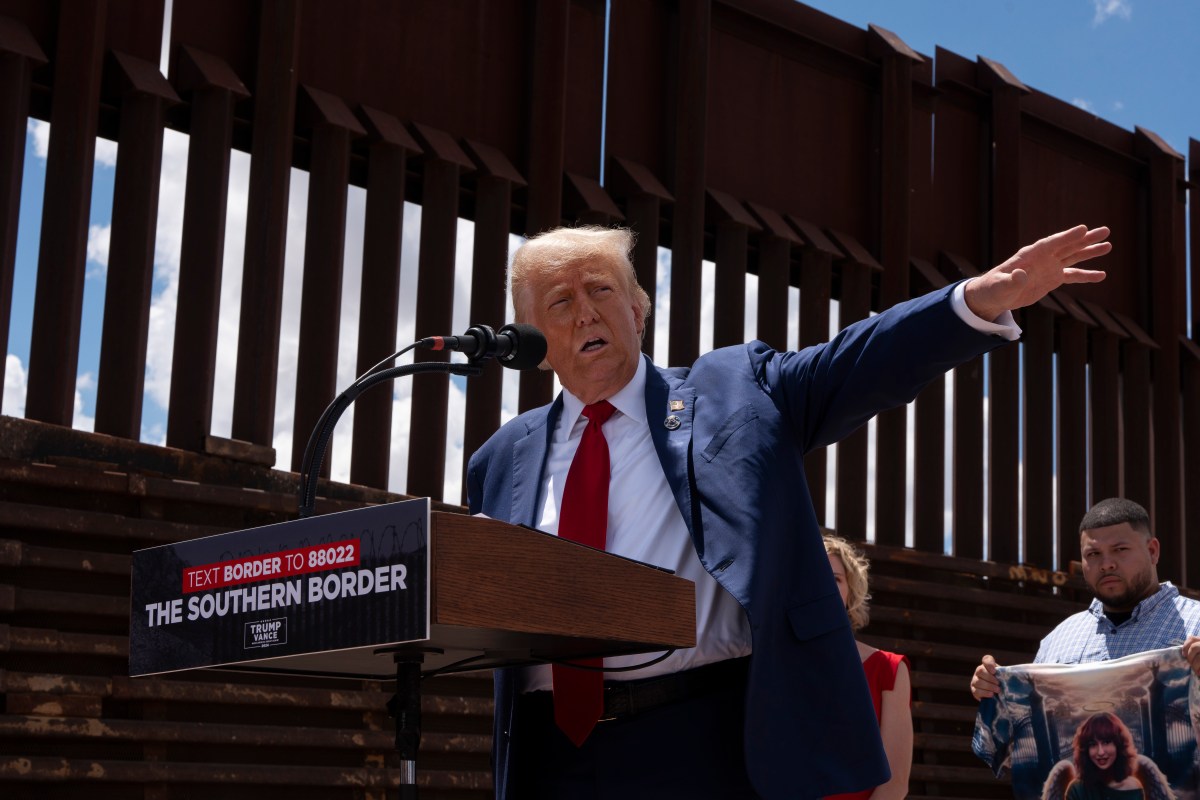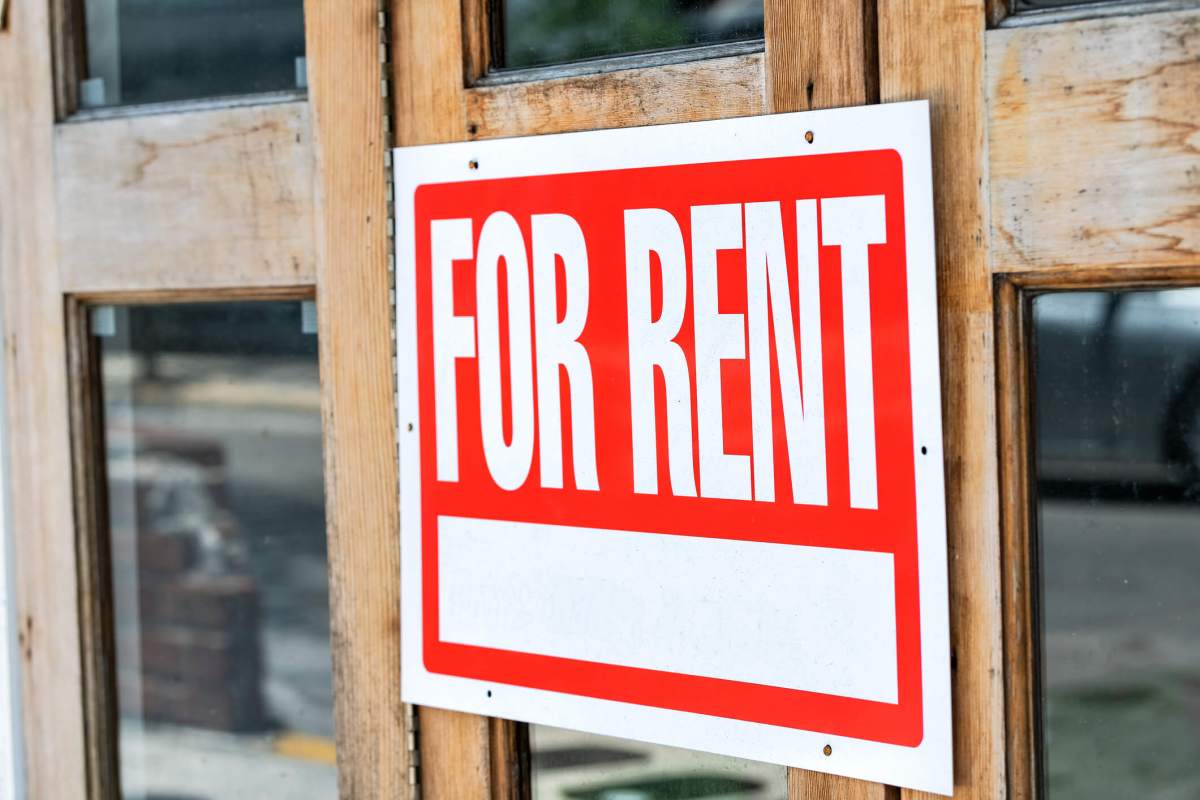MEXICALI, Mexico (Reuters) – Every night, hundreds of farm workers in Mexico crowd for hours in a cramped tunnel to a border station to reach day jobs in Imperial Valley, California, with no social distancing enforced despite coronavirus cases saturating hospitals in the region.
By 2 a.m. on Tuesday, tense men and women with cloth face masks and bandanas jostled for position in a line hundreds deep through the underpass leading from the city of Mexicali to the U.S. port of entry. Vendors sold tamales. A mariachi player lightened the mood. But the only hand-washing station was broken.
The daily back and forth flow to work in the United States and sleep back in Mexico, essential to both the $2 billion Imperial Valley fruit and vegetable harvests and to thousands of families in Mexico, is a testament to the deeply entwined economies on either side of the border.
But the lack of safety measures and the late night crowds stand in contrast to a curfew imposed in Mexicali this week to try to stem the city’s fast rising contagion, as well as to six-feet (1.83 meter) distancing measures in the border station itself.
While no infections have been definitively linked to the Calexico West crossing, both the documented day laborers and U.S. border agents worry the lack of social distancing on the Mexican side and the slow processing at the port of entry put them at risk.Jose Salazar, who earns $500 to $600 harvesting melon in California six days a week, said U.S. Customs and Border Protection (CBP) should add agents to cut the time spent in the line.
“‘La migra’ has not taken care to put on more officers, and that makes the pandemic grow,” he said, using slang for border agents.
The stifling underground tunnel, smelling of sweat and the occasional cigarette and lined with pharmacies advertising Viagra, passes underneath the border fence to a flight of crowded stairs ending at the Calexico West port of entry gate.
Eight farmworkers told Reuters they wait two to three hours each night to cross and worry they are more exposed to the virus before the port of entry than in the fields.Fearful of spending so much time in line, some nights Salazar stays with his son in El Centro, California, rather than head home, he said.
On the U.S. side of the port of entry, CBP agents impose social distancing rules. But some officers said the measures were undermined by the conditions in the tunnel.
“It’s kind of pointless for us to be six feet apart if they (the border crossers) are all crowded up first,” said one CBP agent, waiting for a test at a Calexico clinic after relatives contracted coronavirus and his son developed a fever.
The officer, who asked for anonymity because he was not authorized to speak to the media, told Reuters he was worried about on-the-job exposure.Mexico’s National Immigration Institute did not immediately respond to questions about lack of distancing enforcement and other sanitary measures in the tunnel.
A spokeswoman said CBP was “taking every available precaution to minimize the risk of exposure to our workforce and to members of the public.” In California, 84 CBP employees have tested positive for COVID-19, the agency said. It did not give data specifically for Calexico. Employers have asked for Calexico’s second port of entry to open at night to avoid bottlenecks.”We have continued to request that CBP increase the hours of its Calexico East Port of Entry as well so that our agricultural employees can utilize that border crossing,” said Brea Mohamed, executive director of the Imperial County Farm Bureau.
(Reporting by Laura Gottesdiener; Editing by Frank Jack Daniel and Tom Brown)

